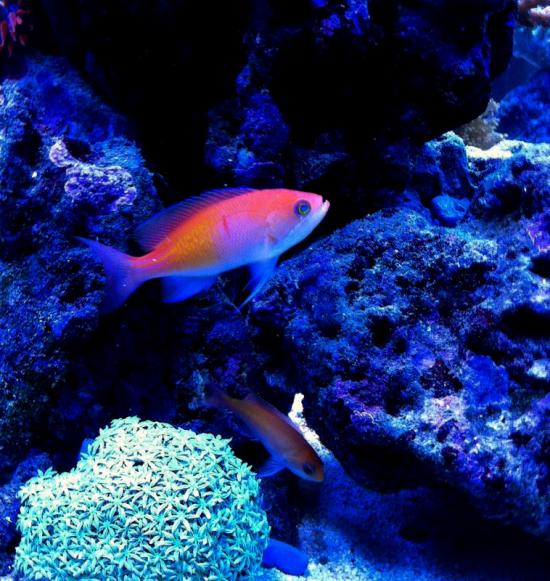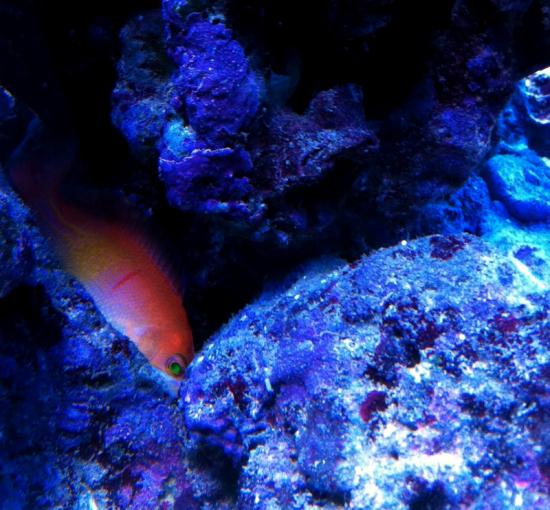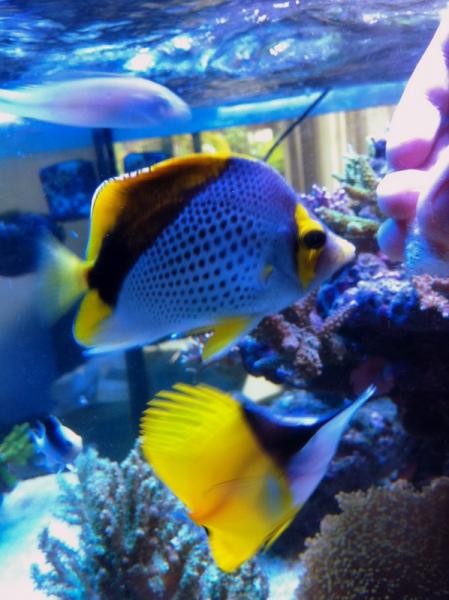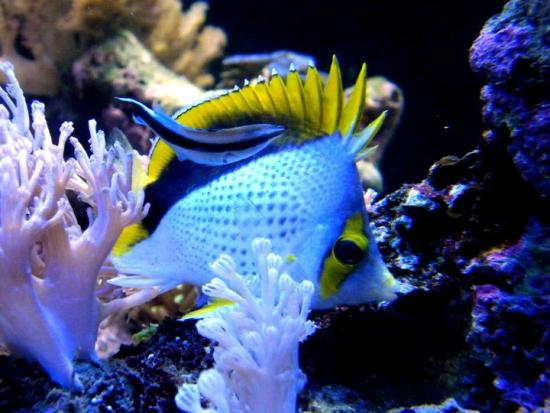-
Posts
16,553 -
Joined
-
Last visited
-
Days Won
29
Content Type
Profiles
Forums
Gallery
Everything posted by yikai
-
usually snout to tail. i won't worry because length of tail does not make much of a difference really. not to me actually. the tail is not flesh and not much. it's just usually longer tail or filaments which doesn't really add much to total size. just my opinion.
-
yup do try the light method. but make sure it's sound asleep first and stalk it. know it's position. then quickly blast the lights and faster prod it out and scoop. angels have spines on the cheek so be careful when using a net to scoop it. it's spine ma get stuck and it will hurt or injure the fish badly. i use a sieve net to minimise damage. use net also can. just be careful good luck!!
-
have u tried the lights off and blast technique? it's very very useful... i know you've mentioned that it sleeps deep in the rocks. but at night when everything is sleeping, one to two hours after lights off, you blast your tank lights. everything will be very blur. if ur bellus is deep in a cave, use a stick to prod it out. it will be very very stunned and won't swim much. just prod it out and faster scoop. it's worth a shot. seriously. i've tried it many times on even damsels. try it.
-
Always using times new roman for your reports and what not? here's how the other fonts feel. hahaha. i love college humour
-
you have some nice big colonies.
-
nice golden leptastrea!
-
this is an undescribed anthias. Pseudanthias sp. It's pink with numerous gold flecks on the second half of the body toward the tail region. The gold spots are very fine and hard to photograph, and thus it appear as a yellow patch instead. A relatively new species of anthias that has not been described and given a scientific name yet. It's closely related to Pseudanthias marcia the bottom of the first pic is the duller female. when the male is displaying to the female, the body turns bright pink and the gold spots intensify. the tail goes from transparent to pink with an intense blood red border. the red margined tail can only be seen when the male is displaying.
-
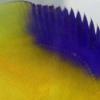
OMG! Look at these hybrids and rare fishes!
yikai replied to Digiman's topic in FOWLR (Fish-only with Live-rock)
-

OMG! Look at these hybrids and rare fishes!
yikai replied to Digiman's topic in FOWLR (Fish-only with Live-rock)
i love this video. tinker's butterlfy is a beautiful fish and worth every cent! it lives in deep water with plenty of rubble as you can see in this video. the habitat has very little corals, and corals is not a major constituent to it's diet. reef safe with caution. -
oh yes thank you. size is about 3.5 inch.
-
Hello friends, am considering to sell this declivis butterflyfish. Going to add a new roaps butterflyfish and IF they don't play well together, then this fella has to go. so just gauging interest for now. might not sell it if the two fishes do not fight so don't be dissapointed if i don't sell it. asking price $200. price in LFS is around this price. fish has been with me for very long, eats anything, no disease and very fat. declivis butterfly is a member of the roaps sub genus and all butterflies in this group are extremely hardy and fairly disease resistant. no problem in getting them to feed even on shipment day. attached a picture of it being hand fed with mysis. and another pic of it being cleaned. ******* potential buyers please note that this fish is fairly reef safe as far as butterflies go. this fish does not live in shallow water reefs unlike many of it's relative. rather, it lives in deeper water where there's plenty of rubble rock and not much corals. however, there's a risk it might eat your corals so if i'm planning to sell it, i'm not letting it go to anyone who cannot afford to take some risk. it has not taken a bite of anything except fish food and liverock in my tank since day 1.
-

Weekly Update 3rd Jan - 10th Jan 2011
yikai replied to onizukaa's topic in Weekly LFS Stocks Report / LFS Info Centre
Yes sold but Not collected yet -

Weekly Update 3rd Jan - 10th Jan 2011
yikai replied to onizukaa's topic in Weekly LFS Stocks Report / LFS Info Centre
Hybrid tang looks like an aberrant mimic and Some other tang. Dorsnt look like a hybrid to me. Just an aberration. But looks interesting -

Weekly Update 3rd Jan - 10th Jan 2011
yikai replied to onizukaa's topic in Weekly LFS Stocks Report / LFS Info Centre
it's called a super hybrid for a reason haha.. very rare. hybrid lemonpeels very common but those super hybrids. those are very rare and expensive. hope to see them again. -
have not received a reply. maybe you can try google?
-
are u still in HK? wan tapao some back for me? lol.
-
ha thanks anyway. got any gems there?
-
i can tell you are the type who love your corals way too much. i suggest next time you don't buy anymore angels and butterflies. even swallowtail angels from this genus, genicanthus. there will always be a risk even if it's 1%, it's still a risk. although most of the time genicanthus are reef safe, copperbands are reef safe and a whole bunch of them are reef safe, i still see before cases of them eating corals. it's not all the time, but it's rare enough to be isolated but not counted. i have a declivis buttefly which is suposedly only 50% reef safe, yet it has not eaten a single coral up to now. you on the other hand, have a bellus which is supposedly 90% safe, but still it eat. as i've said, dying corals are a beacon. that's wat attracted it in the first place. its not the fish's fault. it's not your fault also if you decide to buy it and take the risk. however, it will become your fault the minute you kill it or take revenge on it. it's a fish. it knows nothing! so don't think of it as a revengeful evil fish. it's just minding it's own bussiness, unaware of your emotions. trust me i've seen a great deal of bellus angels in my life. this is one of the most beautiful specimen. it will fetch a high price if you want to sell it.
-

OMG! Look at these hybrids and rare fishes!
yikai replied to Digiman's topic in FOWLR (Fish-only with Live-rock)
lennardi is unbelievably stunning. it's really, something that's so beautiful you wonder if it's even real! and it's also one of the rarest wrasses on the face of this planet due to absolutely no collection in the past. but recently many are being collected and for the first time, lennardi is being made available! but i'm surprised at how cheap it is. for a fish of it's calibre, i would expect to be at least 1.5k at LADD. EZ-marine's stocklist is even cheaper at $150USD! unbelievable. -
that's a very beautiful bellus. pls don't kill it...... bellus angels are not very common fishes and finding a healthy one is difficult. yours looks to be a very gorgeous female specimen in it's prime. angels are attracted to dying or unhealthy corals. corals that are receeding, bleaching, injured are all beacons to the angels. you sure the acan was super healthy in it's prime? just to give the fish the benefit of the doubt. if not, then by all means remove the fish. it's not worth it to let a bellus angel eat up your expensive corals. but i urge you one more time don't kill it. that's a gorgeous specimen and if no one want it, i want it. but looks as though many people here are interested in it. it will have a good home.
-

OMG! Look at these hybrids and rare fishes!
yikai replied to Digiman's topic in FOWLR (Fish-only with Live-rock)
ah yes thanks for linking this. i remember writing this long ago. people who are interested to id the babies can start here. it's not that difficult. but will take awhile to get used to. after awhile, it comes naturally. like driving. -
knowing how to ID them via location is very useful too this is easy for chrysurus which is found in africa shipments. maculosus and asfur which are found in red sea shipments. queen and blue which are found in atlantic ocean shipments french and grey which are also found in the atlantic. the rest indo-pacific ones need a bit of experience since they all look rather similar and location is not a factor that can be elimiated. i did not include juvenile king angels because they are the easiest to differntiate, with clarions being the only other juvenile angel that have similar looking colouration. juvenile clarions are very rare and hardly ever see so i did not bother.
-
thanks dun remind me of the fish hahaha i lost many super rare ones over the past few months due to negligance. many of them were the only one specimen in singapore and i'm lucky to have them. sigh.


